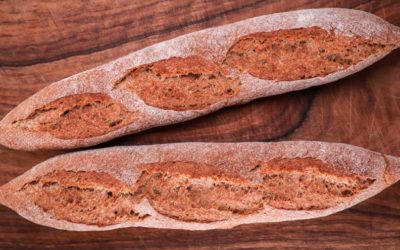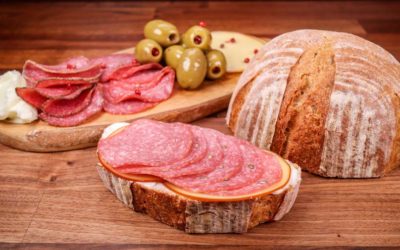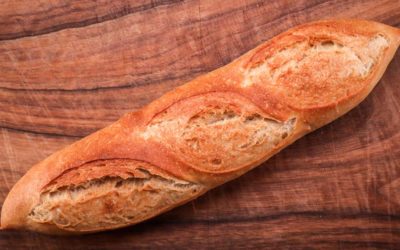Pâte Fermentée also known as fermented dough or old dough is a kind of preferment which is normally made by keeping a piece of previous day’s dough for the next day’s bake.
And then the next day’s dough would get pinched and kept for the following day and so on. This is also known as a ‘pinch back’.
Of course, if you are not baking regularly, then this would not make a lot of sense, but I will show you a way to make it whenever you decide to bake.
What sets this preferment apart from others is that it contains salt as it is a piece of a dough which has been fully mixed. This particular bread also contains butter so I would not recommend keeping a piece of it for the next bake as it contains dairy. But the principle can be applied to any bread be it lean or enriched.
We will simply mix part of the total water, flour, yeast, and salt, and leave it to ferment for 10 – 12 hours.
Using a preferment gives the bread a distinct flavour which can only be achieved by a slow fermentation of a portion of the total flour. With that comes acidity which helps with keeping quality. This is especially beneficial in a large loaf like this as it will stay fresh for longer. The crust gets more substantial too and the interior becomes chewier and heartier. The bread gets a lot of character with this method.
Temperature control is extremely important in this dough as we are using a preferment which is left at room temperature. We must chill it down before use to prevent the dough from getting too warm. It is always advisable to use cooler ingredients as you can simply knead the dough for longer to bring it up to the right temperature. On the other hand, if your dough comes out too warm, then there is not much you can do to fix that.
Watch the video down below for detailed instructions.
You can find the exact loaf tin that I am using in the Shop (UK) & Shop (US) pages
Ingredients
For the old dough –
150g (5.3oz) strong white bread flour
100g (3.5oz) water at room temperature if your kitchen is around 20 – 23C (68-73F) *
2g (0.07oz) salt
Tiny pinch of yeast
*To learn more about dough temperature control click here.
For the main dough –
300g (10.6oz) strong white bread flour
8g (0.28oz) salt
40g (1.4oz) sugar
40g (1.4oz) corn starch
60g (2.1oz) soft butter
6g (0.21oz) instant dry yeast or 7.2g (0.25oz) active dry yeast or 18g (0.63oz) fresh yeast
180g (6.35oz) cold water *
*To learn more about dough temperature when using a preferment click here.
Method
- Make the preferment. In a bowl combine the water, pinch of yeast, salt, and flour. Mix well until there is no more flour left. Leave to ferment for 10 – 12 hours.
- One hour before making the final dough place the preferment in your fridge to cool down.
- In a large bowl combine the rest of the water, yeast, salt, sugar, and corn starch. Mix well to dissolve any large salt and sugar crystals and to hydrate the yeast. Add the old dough and the remaining flour. Mix until there is no more dry flour left.
- Knead the dough for 4 minutes. Tear in the soft butter and knead for another 4 minutes. *Desired dough temperature 24C (75F). If your dough is warmer, then it will ferment more rapidly. If it is cooler, then it will take longer. Adjust proofing time accordingly.
- Ferment the dough for 1 hour.
- Fold.
- Ferment for 1 more hour.
- Shape into an oblong loaf. Place in a baking tin. I lined mine with paper just to be safe and prevent the dough from sticking.
- Final proof should take around 2 hours. *During the final hour of fermentation preheat your oven to 160C (320F) fan on.
- Bake the loaf for 40 minutes.
- Remove it from the tin and bake for 10 more minutes.
Let it cool down and enjoy!
Keep in mind that the conditions in each kitchen are different, so fermentation times may vary for you. It is up to the baker to control the bread and react accordingly.
Your oven may be different too, so your baking time may vary.
Watch the video here



